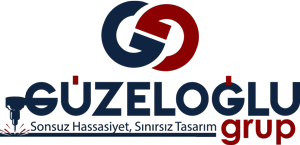
Industrial laser cutting is a method that allows cutting metals and other materials with high precision using laser technology. This technology is widely used in automotive, aerospace, electronics, construction and many other industries. Laser cutting offers many advantages over other cutting methods in terms of precision, speed and flexibility.
How Does It Work?
The laser cutting process is based on the principle of directing a focused laser beam to the material surface and cutting the material by melting or vaporizing it, thanks to the high energy density of this beam. The process steps are as follows:
- Laser Source: The laser beam is generated from laser sources such as CO2, fiber or neodymium-doped yttrium aluminum garnet (Nd:YAG).
- Beam Direction: The laser beam is focused and directed to the material surface with the help of optical mirrors and lenses.
- Cutting Process: When the focused laser beam hits the material surface, it produces high heat and melts or vaporizes the material. During the cutting process, the melted material is blown from the cutting area with high-pressure gas (usually oxygen or nitrogen).
- Motion Control: CNC (Computer Numerical Control) systems create the cutting pattern by controlling the movement of the laser head and material. This ensures high precision and repeatability.
Advantages
- High Precision: Laser cutting can make precise cuts down to thousandths of a millimeter, enabling the production of complex and detailed parts.
- Speed: High cutting speeds increase productivity, especially on thin and medium-thick materials.
- Various Materials: In addition to metals, plastic, wood, glass, ceramics and composite materials can also be processed by laser cutting.
- Minimum Thermal Impact Zone: Laser cutting reduces the risk of deformation and stretching because it applies heat to a small area of the material.
- Automation: Laser cutting machines provide full automation with CNC systems, which speeds up production processes and reduces the error rate.

